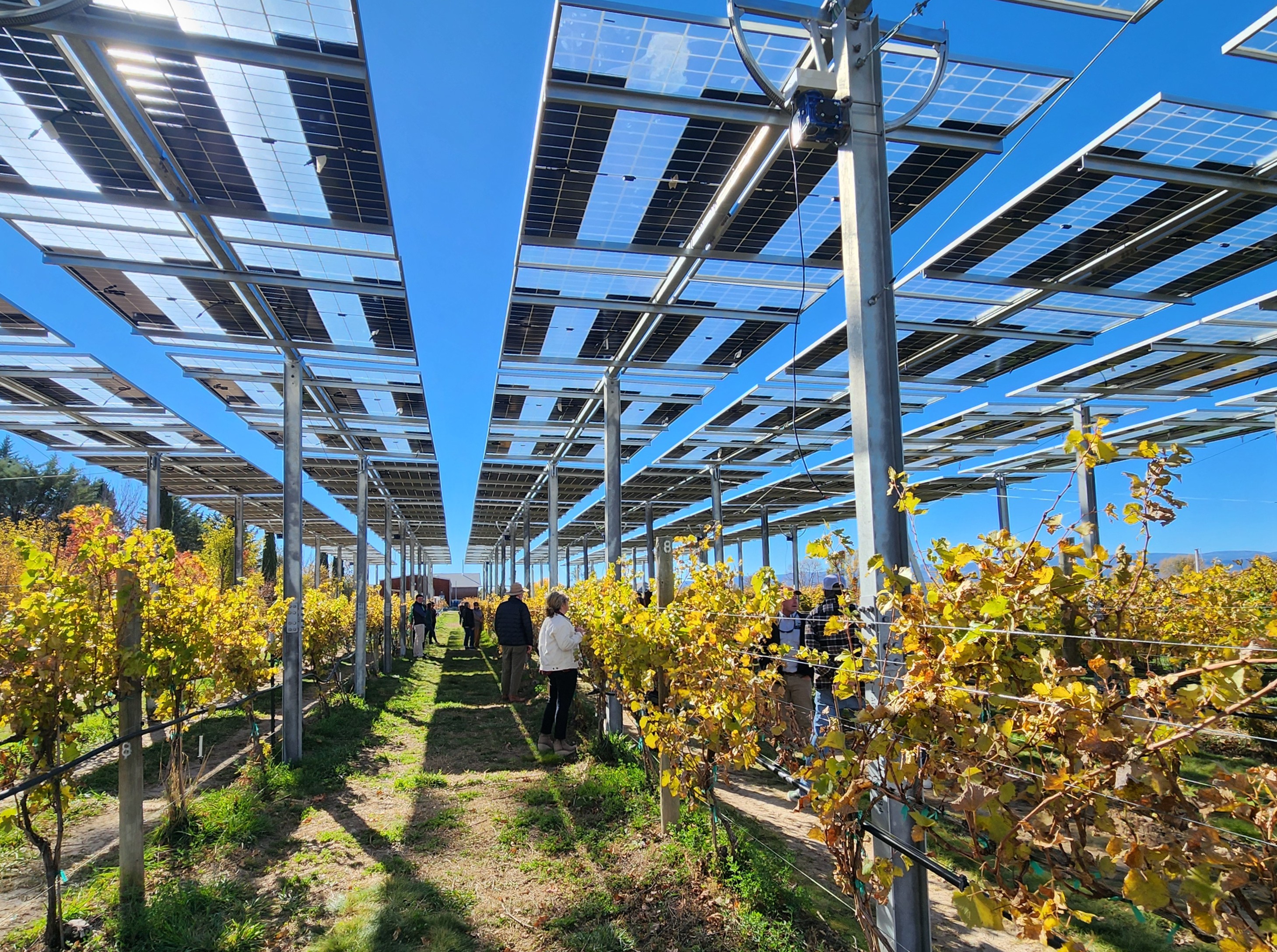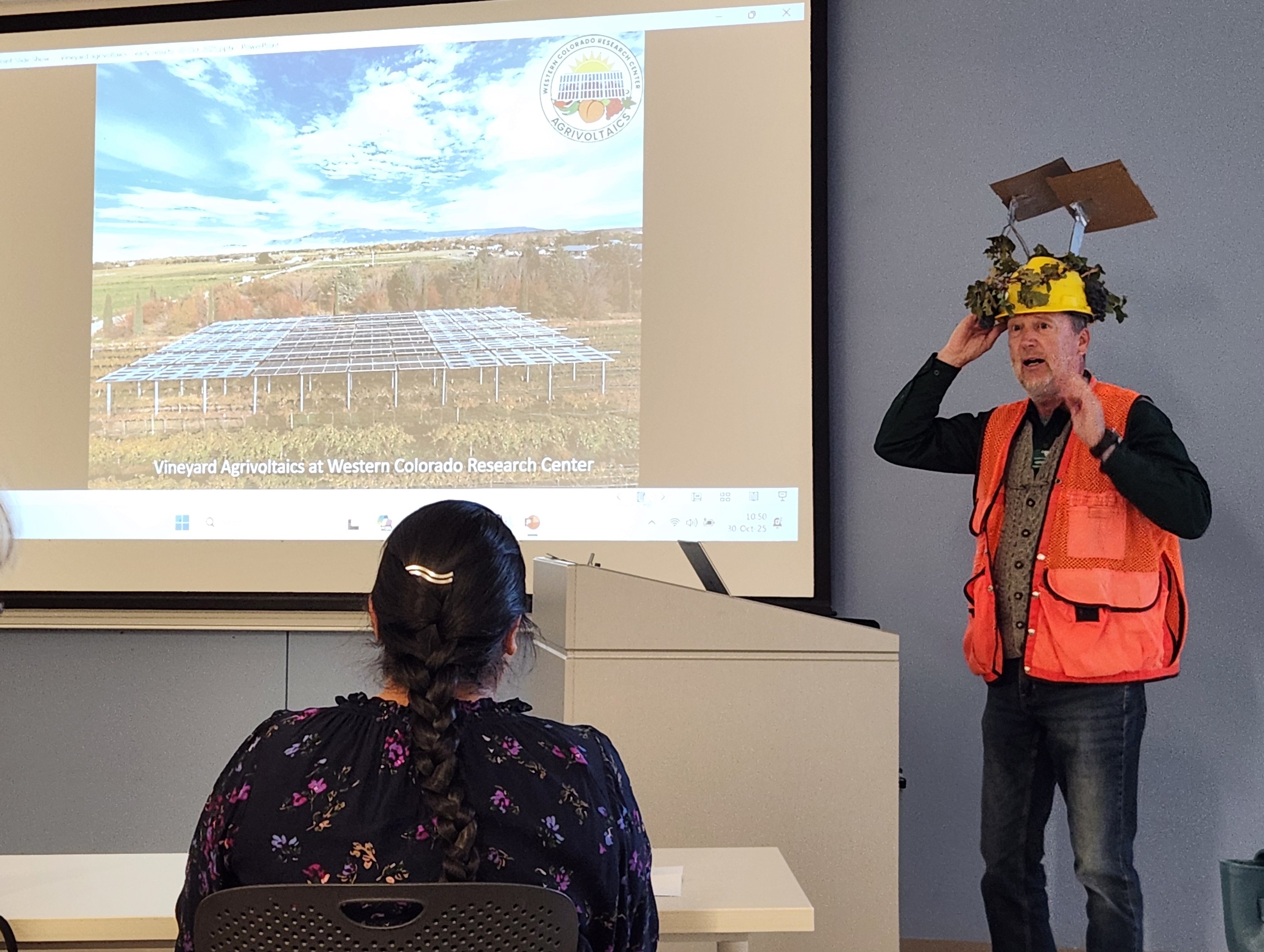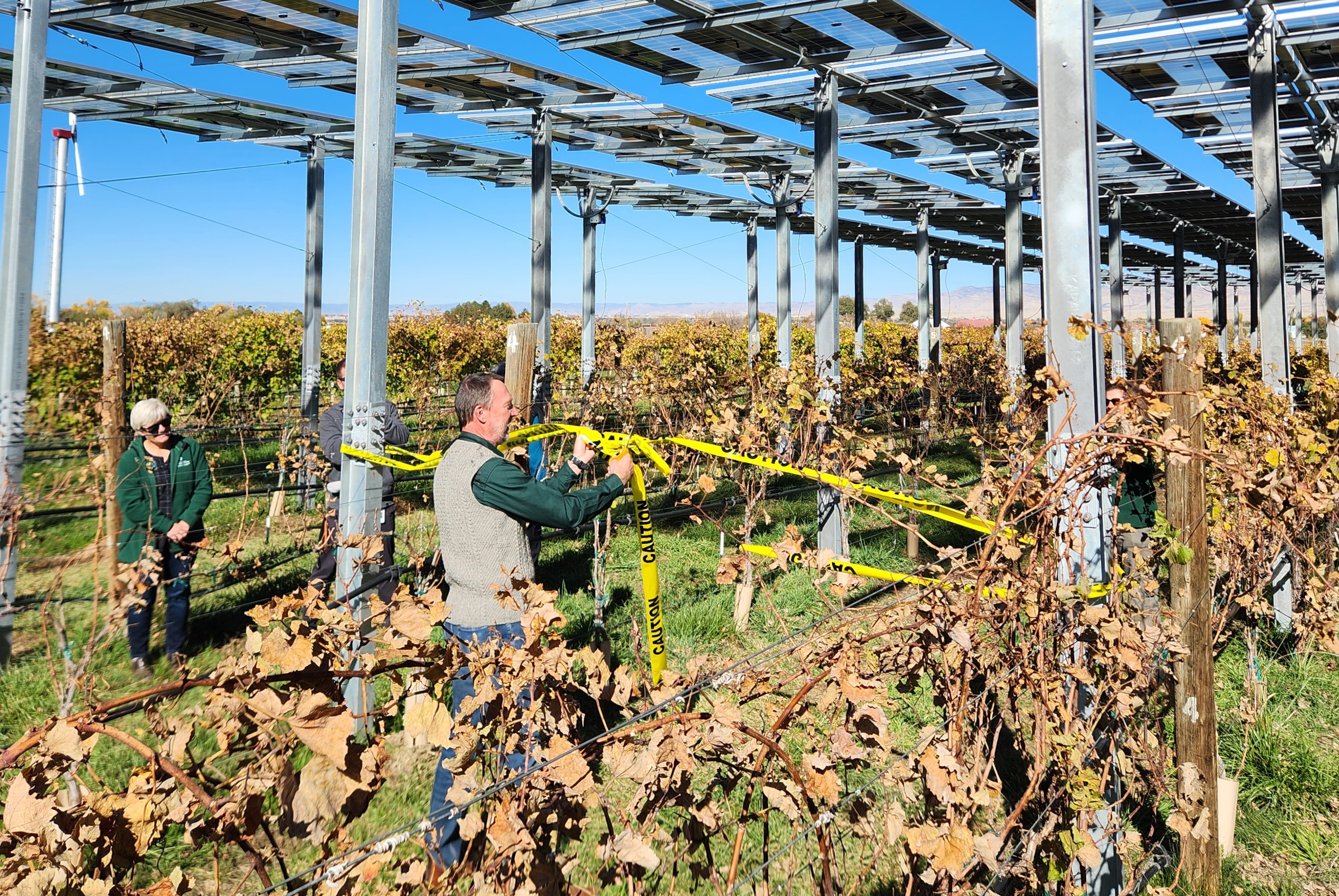A decade-long vision to secure the future of Colorado's wine industry just took a monumental leap. At CSU's Orchard Mesa Research Station, three rows of towering solar panels now stand guard over a chardonnay vineyard, pioneering the study of how agrivoltaics can protect grapes from frost and hail while also generating power.
At the end of October, Colorado Department of Agriculture staff joined other partners and researchers to celebrate the unveiling of the newest research project at CSU's Western Research Campus on Orchard Mesa. The site, located 7 miles southeast of Grand Junction, is home to research projects involving tree fruit, wine grapes, vegetables, and ornamental horticulture.

Attendees strolled through a block of chardonnay grape vines, under a cloudless blue sky. The vineyard with yellowing leaves, fruitless after the last harvest of the season, looks mostly identical to the other vineyards across the Western Slope of Colorado. With one major exception–three rows of lofted solar panels creating a canopy over the rows of crops.
The host of the event, Dr. Horst Caspari, calls this “vitivoltaics,” the co-location of solar panels over a vineyard. It’s a spin on agrivoltaics, solar power generation over productive agricultural land.
 Dr. Caspari is Colorado's State Viticulturist and a CSU professor of Horticulture and Landscape Architecture and was the driving force behind this innovative project, working to secure funding for nearly a decade. Finally, the vision is installed, and Dr. Caspari and his team will work to understand the benefits of combining solar power generation and wine grapes.
Dr. Caspari is Colorado's State Viticulturist and a CSU professor of Horticulture and Landscape Architecture and was the driving force behind this innovative project, working to secure funding for nearly a decade. Finally, the vision is installed, and Dr. Caspari and his team will work to understand the benefits of combining solar power generation and wine grapes.
CDA provided funding for different aspects of the project from two different grant programs. The Agrivoltaics Research and Demonstration grant funded the structure supporting the panels fourteen feet in the air and the single-axis tracking system that allows the panels to move with the sun. The Speciality Crop Block grant, primarily funded the labor costs to install the structure as well as weather stations and environmental sensors. The Colorado Wine Industry Development Board, housed in CDA’s Markets division, also helped fund the project.
Pictured: Dr Caspari wears a solar panel hard hat to demonstrate how grapes would grow below the panels as he presents about the project.
The progress towards investigating when and how agrivoltaics can benefit specialty crop growers in Colorado is being propelled forward by researchers at CSU. From a new project on peach agrivoltaics on Talbott’s Mountain Gold orchard to an on-going study of greens, peppers, and perennials grown under rooftop solar panels in Denver and Fort Collins. And of course, with the research that will now take place at the Orchard Mesa vineyard.
Dr. Caspari will research the potential for solar panels to protect the vines from early and late frosts by trapping warmer air under the canopy. He will examine how the panels impact water retention, grape chemistry, change to hail damage, protection from peak summer sun, and the potential to decrease labor.
The panels also vary in degrees of opacity and type of axis tracking which will allow research to determine the ideal combination of shading and different times of year to optimize growth, crop quality, and energy production. A post-doctoral scientist, Analissa Sarno, is studying the impacts on soil health during the installation process–a critical consideration for any producer who might be interested in agrivoltaics.
Agrivoltaics presents an opportunity for producers to earn another stream of income from energy generation and provide benefits to their crops or livestock under the panels. This solution won’t work on every operation, but CDA is invested in funding innovative projects that do the research trials and make the mistakes so farmers have a tried and true model to emulate should it be a good fit for their operation.
The makeshift caution tape ribbon was cut and the panels were showered with champagne, now let the harvesting of the sun for grapes and solar energy commence!
